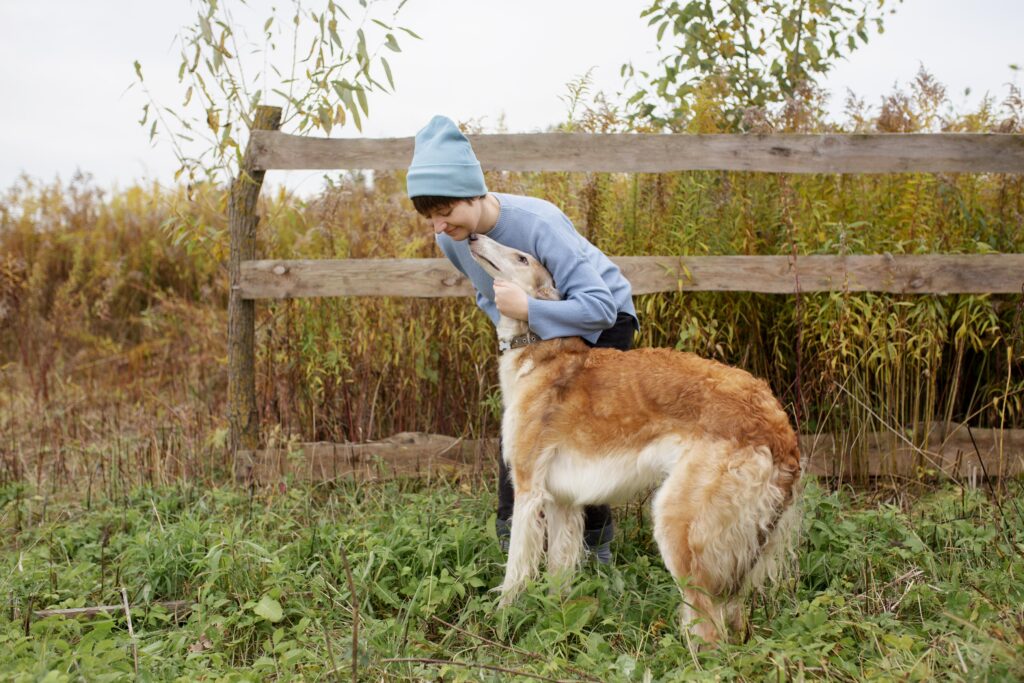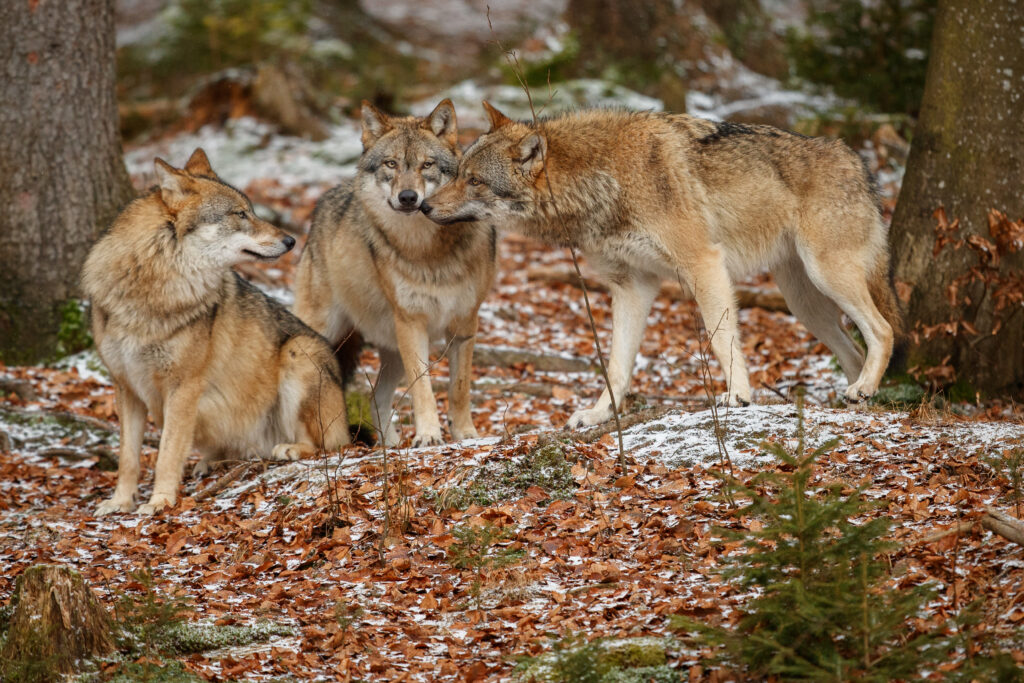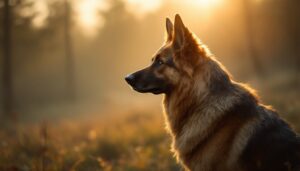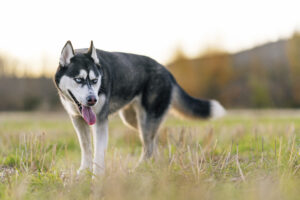Introduction
The question of whether wolves breeding with dogs is possible has fascinated humans for centuries. These two canids share a complex evolutionary relationship that continues to unfold in ways that impact wildlife conservation, pet ownership, and our understanding of canine genetics. While many people are captivated by the mystique of wolf-dog hybrids, there are profound consequences to wolves breeding with dogs that deserve serious attention.
Wolves breeding with dogs is not just possible—it’s a biological reality with far-reaching implications. As close genetic relatives sharing 98.8% of their DNA, wolves and domestic dogs can and do produce viable offspring when they mate. The resulting wolf-dog hybrids (also called wolfdogs) represent a fascinating but often problematic intersection of wild and domestic canine traits.
In the United States, where both wild wolf populations and domestic dog ownership are significant, the phenomenon of wolves breeding with dogs creates unique challenges for wildlife managers, pet owners, and communities. This comprehensive article examines five shocking consequences of wolves breeding with dogs that rarely receive the attention they deserve.

The Biological Reality: Can Wolves Breed With Dogs?
Before diving into the consequences, it’s important to establish the biological facts. Can wolves breed with dogs? The answer is definitively yes. Despite thousands of years of domestication separating them, wolves and dogs remain genetically compatible enough to produce fertile offspring.
When dog and wolf mating occurs, whether in the wild or in captivity, the resulting offspring are true hybrids. Unlike some cross-species breeding that produces sterile offspring (like mules from horses and donkeys), wolf-dog hybrids are typically fertile and capable of reproducing with wolves, dogs, or other hybrids.
The scientific classification reflects this close relationship:
- Gray wolves: Canis lupus
- Domestic dogs: Canis lupus familiaris
This taxonomic classification indicates that domestic dogs are technically a subspecies of the gray wolf, which explains why wolves breeding with dogs is biologically possible.
The American Kennel Club acknowledges this relationship, noting that “all modern dogs are descendants of wolves.” However, this genetic compatibility doesn’t mean that wolves breeding with dogs is without significant consequences, as we’ll explore throughout this article.
Types of Wolf-Dog Hybrids
When wolves breeding with dogs occurs, the resulting offspring can vary widely in their genetic makeup and physical characteristics. Wolf-dog hybrids are typically categorized by “content” percentages:
- Low-content hybrids: Contain 1-49% wolf ancestry, with dogs as the predominant genetic influence
- Mid-content hybrids: Possess approximately 50-74% wolf genetics
- High-content hybrids: Contain 75% or more wolf ancestry
Several recognized wolfdog breeds have developed through controlled breeding programs involving wolf and dog crossbreed specimens. These include:
- Czechoslovakian Wolfdog: Developed in Czechoslovakia in the 1950s by crossing German Shepherds with Carpathian wolves
- Saarloos Wolfdog: Created in the Netherlands in the 1930s by crossing German Shepherds with European wolves
- American Tundra Shepherd: A more recent development combining German Shepherds with Arctic wolves
- Alaskan Noble Companion Dog: A wolf-like dog developed without recent wolf ancestry
- Northern Inuit Dog: Developed in the UK to resemble wolves but with domestic dog temperament
These established wolfdog breeds represent controlled attempts to harness certain wolf traits while maintaining the manageable temperament of domestic dogs. However, many wolf-dog hybrids are the result of unregulated breeding between wild wolves and domestic dogs or between existing hybrids.
According to the International Wolf Center, many animals sold as “wolf-dogs” are actually misrepresented and may contain little to no wolf content. DNA testing is the only reliable way to confirm wolf ancestry in dogs with wolf-like appearances.
Consequence #1: Genetic Integrity Threats to Wild Wolf Populations
One of the most serious consequences of wolves breeding with dogs involves threats to the genetic integrity of wild wolf populations. This becomes especially concerning for endangered wolf subspecies like the Mexican gray wolf and the red wolf.
When wolves breeding with dogs occurs in the wild, it can introduce domestic dog genes into wild wolf populations—a process called genetic introgression. This dilution of the wild wolf gene pool can have several detrimental effects:
- Loss of specific adaptations that have evolved over thousands of years
- Reduction in traits that help wolves survive in the wild
- Introduction of genetic material associated with domestication
- Potential disruption of pack structures and behaviors essential for wolf survival
Research published in the journal Conservation Genetics indicates that even small amounts of hybridization can significantly impact endangered wolf populations. Dr. Bridgett vonHoldt, evolutionary biologist at Princeton University, explains: “When wolves breeding with dogs occurs in the wild, it can fundamentally alter the genetic makeup of wolf populations that are already struggling due to habitat loss and persecution.”
The problem is particularly acute for isolated or fragmented wolf populations. A 2018 study in the journal Nature found that several European wolf populations showed significant evidence of dog gene introgression, potentially complicating conservation efforts for these protected species.
In North America, where wild wolf recovery efforts have seen both successes and challenges, the issue of wolves breeding with dogs adds another layer of complexity to conservation strategies. Wildlife managers must now consider genetic testing and management strategies to preserve the genetic integrity of recovering wolf populations.
Consequence #2: Unpredictable Behavior and Safety Concerns

Perhaps the most immediately apparent consequence of wolves breeding with dogs relates to the unpredictable behavior patterns of the resulting hybrids. Wolf dog behavior can be extremely challenging to predict or manage, especially in hybrids with significant wolf content.
Unlike domestic dogs, which have been selectively bred for companionship and predictable behavior around humans, wolves are wild animals with instincts and behavioral patterns suited to life in the wild. When wolves breeding with dogs occurs, the resulting offspring inherit a complex mix of traits from both parents.
Wolf hybrid temperament typically includes:
- Strong predatory instincts that can be triggered unpredictably
- Resource guarding behaviors more intense than in most domestic dogs
- Territory marking and defense behaviors
- Complex social needs based on wolf pack dynamics
- Adolescent development that often includes challenging authority
- Escape artist tendencies and roaming behaviors
Nicole Wilde, canine behavior specialist and author of “Living with Wolfdogs,” notes: “The problem isn’t that wolf-dog hybrids are inherently aggressive—it’s that their behavior is wildly unpredictable compared to domestic dogs. The domestic traits and wild traits don’t blend predictably when wolves breeding with dogs occurs.”
This unpredictability creates significant safety concerns, particularly in family environments. According to the International Wolf Center, wolf-dog hybrids have been responsible for numerous serious attacks on humans, particularly children. Between 1979 and 1998, wolf-dog hybrids killed 14 people in the United States—second only to pit bulls in fatal attacks during that period.
Dr. Randall Lockwood, an expert in dog aggression and animal behavior, explains that “wolf hybrids may react to situations in ways that their owners cannot predict or control.” Unlike domestic dogs, which have been selectively bred to respond to human cues and commands, wolf-dog hybrids retain many wild instincts that can override training in stressful situations.
Consequence #3: Legal and Ethical Complications
The complex nature of wolves breeding with dogs creates numerous legal and ethical challenges. Wolf hybrid legality varies dramatically across the United States, creating a confusing patchwork of regulations:
- Some states completely prohibit ownership of wolf-dog hybrids (e.g., Alaska, Connecticut, Georgia)
- Other states regulate them as exotic animals requiring special permits
- Some states have no specific regulations, treating them like domestic dogs
- Many cities and counties have restrictions even in states that allow ownership
- Federal regulations may apply in some cases involving endangered wolf subspecies
This regulatory inconsistency reflects the fundamental challenge of categorizing animals that exist on the spectrum between wild and domestic. It also creates significant enforcement challenges—without expensive DNA testing, it can be difficult to determine whether an animal is truly a product of wolves breeding with dogs or simply a dog with wolf-like appearances.
The ethical considerations are equally complex. Many wolf-dog hybrids end up abandoned or surrendered to shelters when owners discover they cannot manage these animals’ needs. According to the Wolf Dog Coalition, approximately 80% of wolf-dog hybrids are euthanized by age 3 due to abandonment, behavioral issues, or legal complications.
Rescue organizations dedicated to wolf-dog hybrids are chronically overwhelmed. Susan Weidel, founder of Wolf Haven sanctuary in Washington state, explains: “We receive hundreds of requests annually to take in wolf-dogs that people can no longer handle. The sad reality is that most wolf-dogs resulting from wolves breeding with dogs end up with nowhere to go.”
These animals often face a cruel double jeopardy: too wild for typical homes but too domesticated for life in the wild. The ethical implications of intentionally creating animals that face such challenging prospects are significant and often overlooked by those fascinated by the idea of owning a “part wolf” pet.
Consequence #4: Health and Welfare Challenges
The offspring of wolves breeding with dogs face unique health and welfare challenges that many potential owners fail to consider. While some dog wolf hybrid lifespan statistics suggest these animals can live 12-14 years with proper care, health issues specific to hybrids can complicate their care:
- Vaccine efficacy concerns: Standard canine vaccines have not been specifically tested or approved for wolf-dog hybrids, raising questions about their effectiveness in these animals
- Anesthesia sensitivity: Wolf-dog hybrids often show different responses to anesthesia than domestic dogs, creating risks during veterinary procedures
- Parasitic vulnerability: Some hybrids may inherit increased susceptibility to certain parasites common in wild wolves
- Dietary requirements: Wolf-dog hybrids often have nutritional needs different from domestic dogs, requiring specialized diets
Beyond physical health, wolf-dog hybrids also face significant welfare challenges. As products of wolves breeding with dogs, they possess a complex mix of traits that can make meeting their psychological and behavioral needs extremely difficult in domestic settings.
Wolf dog characteristics that create welfare challenges include:
- Extreme exercise needs far beyond what most dog owners can provide
- Strong denning instincts that can lead to destructive behavior indoors
- Complex social needs based on wolf pack dynamics
- Sensitivity to environmental stressors like unfamiliar people or animals
- Seasonal behavioral changes tied to wild breeding cycles
Dr. Kathryn Primm, veterinarian and animal welfare advocate, explains: “Many wolf-dog hybrids suffer from inadequate living conditions because their owners simply cannot meet their complex needs. These animals resulting from wolves breeding with dogs often require specialized enclosures, enrichment, and management that most pet owners cannot provide.”
The inability to meet these specialized needs often leads to behavioral problems, which in turn results in abandonment or euthanasia. This creates a cycle of suffering that raises serious ethical questions about the deliberate breeding of wolf-dog hybrids.
As our article on proper pet care emphasizes, responsible pet ownership requires providing for all of an animal’s physical and psychological needs—something extraordinarily difficult with wolf-dog hybrids.
Consequence #5: “Wolf Washing” and Market Exploitation
A rarely discussed consequence of public fascination with wolves breeding with dogs is the phenomenon of “wolf washing”—the misrepresentation of dogs as wolf hybrids to increase their market value or appeal. This deceptive practice has become increasingly common as interest in wolf-like dogs has grown.
According to a study published in the Journal of Veterinary Behavior, DNA testing revealed that approximately 60% of animals marketed as wolf-dog hybrids showed no detectable wolf ancestry. These animals were typically mixed-breed dogs with physical characteristics that appeared wolf-like to untrained observers.
The market for supposed wolf-dog hybrids is driven by several factors:
- Public fascination with wolves and wild animals
- Desire for “exotic” or unusual pets
- Marketing that emphasizes the intelligence and independent nature of wolf hybrids
- Media portrayals of wolves and wolf-dogs (Game of Thrones’ direwolves increased demand)
- Misconceptions about wolf dog intelligence and trainability
This market creates incentives for unscrupulous breeders to misrepresent dogs as products of wolves breeding with dogs. Some breeders may attempt to charge premium prices—sometimes thousands of dollars—for puppies claimed to be wolf hybrids but are actually domestic dog mixes with no wolf content.
The consequences of this deception extend beyond consumer fraud. People who purchase supposed wolf-dog hybrids may:
- Make housing or lifestyle decisions based on false expectations
- Face legal complications if they live in areas where wolf hybrids are restricted
- Struggle to obtain homeowner’s insurance or veterinary care
- Experience confusion and frustration when the animal doesn’t display expected “wolf” behaviors
Nicole Wilde notes: “I’ve worked with countless owners who were told they had high-content wolf dogs, only to discover through DNA testing or expert evaluation that they had normal domestic dogs. The deception around wolves breeding with dogs creates real problems for both animals and owners.”
Living with Wolf-Dog Hybrids: What Potential Owners Should Know

For those still interested in wolf-dog hybrids despite the challenges, understanding the realities of living with these complex animals is essential. Here are critical considerations for anyone contemplating ownership of an animal resulting from wolves breeding with dogs
Legal Considerations
- Research local, county, and state regulations regarding wolf hybrid legality
- Understand that regulations may change, potentially affecting your ability to keep your animal
- Verify insurance options, as many homeowner’s policies exclude coverage for wolf-dog hybrids
- Consider legal liability implications if your hybrid is involved in an incident
Housing Requirements
- Secure containment is essential—wolf-dog hybrids are notorious escape artists
- Fencing should be at least 8 feet tall with dig guards extending 2-3 feet underground
- Double-gate systems are recommended to prevent escapes
- Indoor areas must be “wolf-proofed” against chewing and destruction
Behavioral Realities
- Wolf dog behavior includes many wild instincts that cannot be “trained out”
- Expect challenges with house training, as marking behaviors are strong
- Socialization is critical but does not guarantee safe behavior around strangers
- Resource guarding can be more intense than in domestic dogs
- Prey drive may be triggered by small animals, including cats and small dogs
Health Management
- Find a veterinarian experienced with wolf-dog hybrids before acquisition
- Discuss vaccination protocols specific to hybrids
- Plan for specialized diet requirements different from domestic dogs
- Consider spay/neuter essential due to roaming behaviors and hybrid breeding concerns
Ethical Considerations
- Research reputable sanctuaries and prepare a contingency plan if you cannot keep the animal
- Consider adopting existing wolves in need rather than creating new ones
- Understand the potential ecological impact of escaped wolf-dog hybrids
- Recognize that supporting the hybrid industry may contribute to animal welfare issues
As our article on choosing the right pet for your lifestyle emphasizes, matching your living situation and capabilities to your pet’s needs is essential for a successful relationship.
Legal Status of Wolf-Dog Hybrids Across the United States
The legal status of animals resulting from wolves breeding with dogs varies dramatically across the United States. This inconsistency creates significant challenges for owners, law enforcement, animal control agencies, and the hybrids themselves.
States with Complete Bans on Wolf-Dog Hybrids
- Alaska
- Connecticut
- Georgia
- Hawaii
- Illinois
- Massachusetts
- Michigan
- New Hampshire
- Rhode Island
- Wyoming
States with Partial Restrictions or Permit Requirements
- Arizona
- Arkansas
- California
- Colorado
- Idaho
- Iowa
- Kansas
- Louisiana
- Maryland
- Nebraska
- Nevada
- New Jersey
- New Mexico
- New York
- North Dakota
- Oregon
- Pennsylvania
- South Dakota
- Utah
- Vermont
- Virginia
- Washington
- West Virginia
States with Few or No Specific Regulations
- Alabama
- Delaware
- Florida
- Indiana
- Kentucky
- Maine
- Minnesota
- Mississippi
- Missouri
- Montana
- North Carolina
- Ohio
- Oklahoma
- South Carolina
- Tennessee
- Texas
- Wisconsin
Even in states with few restrictions, local ordinances at the county or city level may impose additional regulations or outright bans. Some jurisdictions classify wolf-dog hybrids as exotic animals, while others treat them as domestic dogs.
Enforcement of these regulations presents additional challenges. Without DNA testing, it can be difficult to definitively determine whether an animal is truly a product of wolves breeding with dogs or simply a dog with wolf-like appearances. This ambiguity creates challenges for both owners trying to comply with regulations and authorities tasked with enforcing them.
The legal landscape surrounding wolf-dog hybrids reflects the fundamental challenge of categorizing animals that exist on the spectrum between wild and domestic. It also highlights the need for more consistent approaches to managing the consequences of wolves breeding with dogs.
The Science of Wolf-Dog Hybridization
The genetic relationship between wolves and dogs is fascinating and complex. Modern scientific understanding confirms that wolves breeding with dogs produces viable offspring because these animals share approximately 98.8% of their DNA.
Research led by Dr. Robert Wayne at UCLA has shown that all modern domestic dogs descended from gray wolves, with domestication beginning around 15,000-40,000 years ago. This relatively recent divergence explains why wolves breeding with dogs remains biologically possible despite the significant behavioral and physical differences between the two.
When dog and wolf mating occurs, several interesting genetic phenomena take place:
- Heterosis (hybrid vigor): First-generation hybrids often show improved health and physical capabilities
- Phenotypic variation: Offspring can show incredibly diverse physical traits
- Behavioral inheritance: Complex behaviors are inherited in patterns that can be unpredictable
- Epigenetic factors: Environmental conditions can influence how genes express themselves
Recent advances in genomic analysis have revealed that many modern dog breeds already contain small amounts of wolf DNA from ancient hybridization events. A 2018 study published in Science found that up to 25% of modern dog breeds show evidence of past wolves breeding with dogs events in their genetic history.
Wolf dog intelligence presents a particularly interesting area of study. While wolves generally score higher than dogs on problem-solving tasks requiring independent thinking, dogs outperform wolves on tasks involving human social cues. Wolf-dog hybrids often show a complex mix of these cognitive traits, sometimes creating challenges in domestic settings where response to human direction is valued.
According to Dr. Kathryn Lord, an expert in canid behavioral development: “The difference between wolves and dogs isn’t about intelligence—it’s about the type of intelligence and how it’s applied. When wolves breeding with dogs occurs, we see fascinating combinations of these different cognitive approaches.”
Conservation Implications of Wolf-Dog Hybridization
From a conservation perspective, wolves breeding with dogs presents significant challenges. As wolf populations recover in parts of their former range, the potential for hybridization increases in areas where wolves and dogs come into contact.
Several documented cases illustrate the conservation concerns:
- In Italy’s Apennine Mountains, where wolves were reduced to about 100 individuals by the 1970s, genetic studies found significant dog introgression in the recovering population
- The critically endangered red wolf population in North Carolina faces hybridization threats from both coyotes and domestic dogs
- Mexican gray wolves, the most endangered gray wolf subspecies in North America, require careful genetic management to prevent hybridization
The U.S. Fish and Wildlife Service has developed specific policies regarding wolf-dog hybrids in the context of the Endangered Species Act. These policies generally do not extend federal protection to hybrids, even when one parent is from an endangered wolf population.
Conservation biologist Dr. Linda Rutledge explains: “When wolves breeding with dogs occurs in the wild, it can undermine conservation efforts by diluting the very gene pool we’re trying to preserve. It’s a complex issue because these are natural processes, but they’re significantly influenced by human activities.”
Some conservation strategies to address hybridization include:
- Buffer zones around protected wolf habitat to reduce contact with dogs
- Domestic dog management in areas adjacent to wolf territories
- Genetic monitoring of wolf populations to detect hybridization
- Selective management of identified hybrids in some cases
As our article on wildlife conservation efforts emphasizes, protecting endangered species requires addressing complex threats like hybridization.
Ethical Considerations and Responsible Ownership
The ethical dimensions of wolves breeding with dogs extend beyond the immediate welfare concerns for individual animals. The intentional creation of wolf-dog hybrids raises broader questions about our responsibility toward both wild and domestic animals.
Several ethical frameworks can help evaluate the practice:
- Welfare ethics: Does creating wolf-dog hybrids serve the best interests of the animals themselves?
- Conservation ethics: How does hybrid breeding impact wild wolf conservation efforts?
- Social contract ethics: What responsibilities do we have toward animals we bring into human society?
- Virtue ethics: What does our treatment of these animals say about our character?
Many wolf conservation organizations and animal welfare groups discourage the deliberate breeding of wolf-dog hybrids. The Wolf Conservation Center states: “We believe that wolves belong in the wild and dogs belong in homes. The intentional creation of animals that fit neither context serves neither species well.”
For those who already own wolf-dog hybrids, responsible ownership includes:
- Providing appropriate containment and enrichment
- Ensuring the animal cannot reproduce through spay/neuter
- Having contingency plans for the animal’s care if your situation changes
- Contributing to educational efforts about the challenges of hybrid ownership
- Supporting legislative efforts to regulate breeding practices
As emphasized in our article on responsible pet ownership, the decision to bring any animal into your life carries ethical obligations to ensure its wellbeing throughout its lifetime.
Conclusion: Moving Forward with Knowledge and Responsibility
The phenomenon of wolves breeding with dogs represents a fascinating intersection of biology, ethics, and human-animal relationships. While the biological reality allows for viable offspring between these closely related species, the consequences of such hybridization extend far beyond the individual animals involved.
The five major consequences we’ve explored—genetic integrity threats to wild wolf populations, unpredictable behavior and safety concerns, legal and ethical complications, health and welfare challenges, and market exploitation—highlight why this topic deserves more thoughtful attention than it typically receives.
For wildlife managers, the increasing evidence of hybridization between wild wolves and domestic dogs presents complex conservation challenges that require nuanced approaches. For potential pet owners, understanding the profound challenges of responsibly caring for wolf-dog hybrids should prompt careful reconsideration of the romanticized notion of owning a “part wolf” companion.
Ultimately, addressing the challenges associated with wolves breeding with dogs requires a multi-faceted approach:
- Stronger regulatory frameworks to govern breeding and ownership
- Enhanced public education about the realities of wolf-dog hybrids
- Support for legitimate wolf conservation efforts
- Resources for existing wolf-dog hybrid owners and rescue organizations
- Continued scientific research into the genetic and behavioral implications of hybridization
By approaching this complex topic with both scientific understanding and ethical consideration, we can work toward solutions that respect the welfare of individual animals while supporting conservation efforts for wild wolves.
For more information on responsible pet ownership and animal welfare topics, explore our other articles at PetsPump.com.
FAQs About Wolves Breeding With Dogs
Q: Are wolf dogs legal to own as pets? A: The legality of owning animals resulting from wolves breeding with dogs varies significantly by location. Some states completely prohibit ownership, others require special permits, and some have no specific regulations. Always check local, county, and state laws before considering a wolf-dog hybrid.
Q: How long do wolf-dog hybrids live? A: The typical dog wolf hybrid lifespan ranges from 12-14 years with proper care, similar to many large domestic dog breeds. However, individual lifespan can vary based on genetics, care quality, and specific health issues.
Q: Are wolf-dog hybrids good pets? A: Most experts agree that animals resulting from wolves breeding with dogs make challenging pets unsuitable for typical pet homes. Their complex needs, unpredictable behavior, and legal complications create significant challenges for owners.
Q: How can I tell if a dog has wolf in it? A: Visual identification of wolf content is notoriously unreliable. Many dogs with no recent wolf ancestry display “wolfy” physical traits. The only reliable method to determine if an animal is truly a product of wolves breeding with dogs is DNA testing from a reputable laboratory.
Q: Can wolf-dog hybrids be trained like regular dogs? A: While wolf-dog hybrids can learn commands and behaviors, their training typically requires different approaches than those used with domestic dogs. Hybrids generally respond poorly to force-based methods and may never achieve the same reliability in training as domestic dogs.






